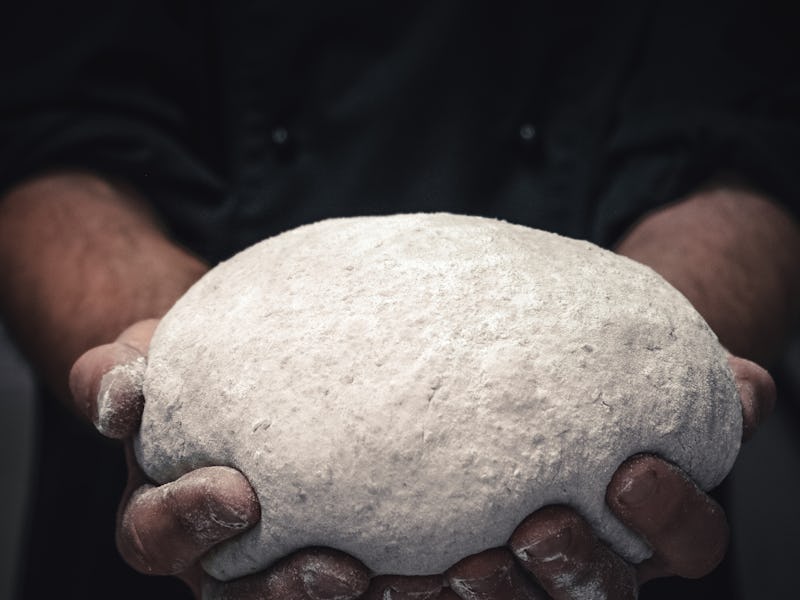How a group of scientists turned bread into wine to fight climate change
Feeding microbes old bread may close the loop on food production.

Humans waste an absurd amount of food, but a new study offers an ingenious way to reduce food waste and power science.
Here's how it works: Researchers devised a way to feed waste bread to bacteria, which then can be used by bakeries, wineries, and makers of dairy products — all of which rely on microorganisms to aid fermentation.
The method is described in a new study published Friday in the journal Frontiers in Microbiology.
In the paper, the researchers describe how they tested more than 40 sets of growing conditions to determine the best mix of time, temperature, and amounts of bread, enzymes, and other supplements to get the bacteria to do their job.
"We believe that the introduction of innovative bioprocessing technologies might be the key to unravel the burden of food waste [and] improving sustainability of the agro-food system," Carlo Rizzello, co-author and a researcher at the University of Bari Aldo Moro, said in a statement.
Turning food that is no longer fit to eat into fresh, new food, could effectively end a wasteful cycle, the researchers say. The microbes fermentation relies on — bacteria, yeast, and others — need a good meal to fuel them. Discarded bread is particularly nutritious, and cheaper than current feed sources, too. Bringing wasted bread in to feed these organisms could cut costs by two-thirds, the researchers estimate. It also doesn't require new equipment.
"The protocol we were able to set up combines both the need for disposing of the huge amount of bread waste with that of cheap sources for media production, while fitting for the cultivation of several food industry starters, and it is patent pending," Rizzello said.
Cutting food waste is a climate solution
There are no two ways about it: Food waste is contributes to climate change. When perfectly good food goes uneaten, it gives off unnecessary greenhouse gases. These include: Carbon dioxide, produced during production and transportation, and then methane, which is produced during decomposition.
Scientists once thought that a third of the food humans produce gets wasted, but recent research suggests that the amount of waste might be twice as high as that.
To try mitigate the problem, researchers have proposed other innovative ideas, like turning wasted food into hydrogen fuel, or nano-packaging that might reduce both food and packaging waste.
Thanks to this new study, bakeries and other fermentation-heavy food producers can take action, too. Bread recycling could well be the next big step toward ending food waste and curbing climate change.
Abstract: The amount of bread wasted daily worldwide, throughout its entire lifecycle, from production to distribution, is estimated to be hundreds of tons, therefore representing both economic and environmental issues. This work aimed at the valorization of wasted bread, setting-up a protocol for obtaining a growth medium to be used for the cultivation of food industry microbial starters. The optimization of the protocol included the set-up of parameters for the hydrolysis of the bread nutrient compounds with proteolytic and amylolytic enzymes and the supplementation with nitrogen and/or carbon sources. The suitability of the optimized medium for the growth of lactic acid bacteria, yeasts and fungi from dairy, bakery, and wine industries was assessed. Lactic acid bacteria growth was strongly affected by the quantity and quality of nitrogen sources employed, while yeasts and fungi growth exceeded that obtained with the reference media commonly employed for their cultivation. Wasted Bread Medium (WBM) represents a realistic option for the valorization and re-use of bread waste, responding to the modern vision of circular economy.